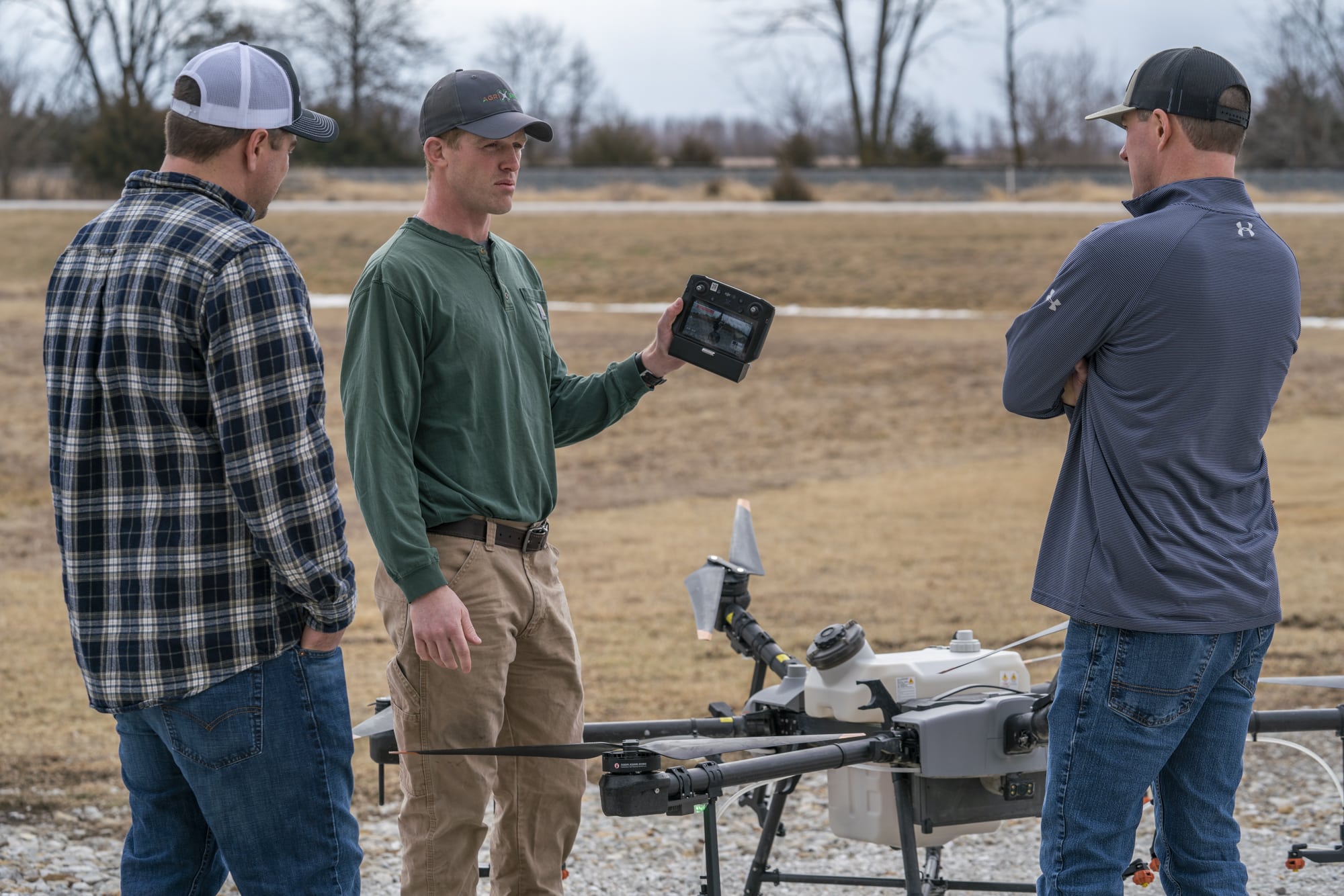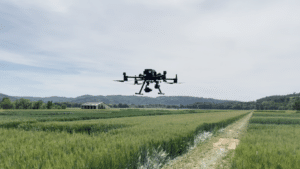From wet-weather spraying to timely scouting, drones are not only proving their efficacy but paving a path for rural entrepreneurship and the next generation on the farm.
Over the past three decades, nothing has proven to be a greater tool in the fight against food insecurity than agriculture technology. The paths that have been paved via genetically modified organisms (GMOs), global positioning systems (GPS), and autosteer have forever changed the course of agriculture and the ability of one farmer to do more — produce more — with less. These once cutting-edge technologies have become part of the year-to-year farming formula, no longer what a farmer needs to be competitive, but what is required to meet return on investment and balance the red and black ink at the end of the year. Today’s leading technology advancements see farmers leveraging soil microbiology and traceability with some even looking to the sky… or rather just above their crop’s canopy, for solutions.
In 2021, the global agriculture drone market was $1.07 billion, by 2030, a recent MarketWatch report estimates the global agriculture drone market to reach $6.89 billion, for a compound annual growth rate (CAGR) of 22.5%. A significant growth rate considering the $1.93 million valuation reported for 2015. And while these numbers are impressive as standalone figures, the stories and opportunities being shared from the farm fields that drones are making an impact in, far and away overarch the monetary market value.
Empowering Rural America
Missouri-based Agri Spray Drones’ founder, Taylor Moreland, is two years into helping his customers make a difference both on the farm and in the communities they live and work in.
“Everything we do, we do with the idea of empowering rural America,” Moreland shares. “I started this company with the farmer in mind, essentially to give the farmer more options when it comes to aerial application, because it’s the only thing the farmer cannot control themselves; it’s an essential piece of the puzzle when it comes to field work and application that a farmer can’t control because they don’t own their own planes,” he says. “But they can own a drone and that allows them to do the work themselves.”
Moreland says that when he started Agri Spray Drones in 2020, he was looking for a way to solve the problems that he was hearing from customers of his seed business. Inevitably, there is a weather event that keeps ground rig sprayers out of the field when it’s time to apply fungicide. That dependence on aerial application bottlenecks the available planes and helicopters and some farmers incur damage and yield loss because of the missed application window.
“I had a good idea that the spray drones would help solve the timing and field accessibility problems my customers were facing, whether it was a drone that they purchased themselves or they worked with a company who offered drone application,” Moreland says.
Currently, DJI offers two spray drone models, the Agras T-10 and T-30, with a soon-to-be third offering of a T-40, coming in 2023. Drone technology is advancing and, in turn, the opportunities for application on the farm, are increasing. Today, Agri Spray Drones’ most popular model is the T-30, a model that can cover between 30 and 35 acres in one hour at a 2 gallons per acre rate.
“Drones have evolved in both hardware and software. They’ve gotten bigger. The software has gotten easier to use, more efficient, and functions more the way a farmer wants to use it, and they’ve gotten a lot easier to work on,” Moreland says. “Everything from the parts to how the drones are being put together is being done with the farmer in mind, the construction is molded to how farmers operate.”
For Trey and Shelby Neill, owners of the Monroe City, Missouri, drone spraying start-up, Prairie Queen Agridrone Solutions, that evolution, along with the guided support and the education Agri Spray Drones offered, was the kick-start they needed. Trey says that both he and Shelby have watched what drones are delivering to the farm and made the decision to add a T-30 and spray business to complement their seed business.
“We got our drone May 10 (2022) and then went to an on-site training that Agri Spray Drones offered. We looked at three other drone companies that were actually cheaper, but after talking to them on the phone, we found out pretty quick that we weren’t going to have much support.”
Like all technologies, education and support are among the greatest barriers to implementation. Drones are no different. To legally fly a drone, pilots need to secure a FAA Part 107, FAA Part 137, and FAA Section 44807 Weight Exemption. In addition, drone registration and a state pesticide applicator’s license are required. For new operators, knowing where to start and who to talk to can be the greatest challenge.
“Like any company, we, of course, want to have return customers, but more than that, we really want to give everyone who buys a drone the education to get the most out of their purchase. Drones are an opportunity to create an additional revenue stream that can bring the next generation back to the farm or bring new business to a rural area,” Moreland says.
For the Neills’ new business, fungicide applications on wheat, corn, and beans are the primary focus, although Trey notes that a rescue application of insecticide on cutworms made all the difference — and a believer — in one customer.
“We had to wait a day for water to recede off a cornfield that had cutworms. We couldn’t even walk out in it, but with the drone, we just waited a day for the water to drain so we could get soil and plant contact and made our application pass,” he says. “It would have been at least a week or more before a ground rig could have got in that field.”
Stay tuned for the second part of this story, where we’ll learn how farmers and companies alike are finding ROI with drones in their fields.
Want to read more? Check out:
Dispelling the Myths About Ag Drone Use
Are Drones Living Up to Their Potential?
How Drone Data Significantly Improves Seed Breeding and Seed Production
As Wildfires Worsen, Native Seed Companies Look Towards New Technology












